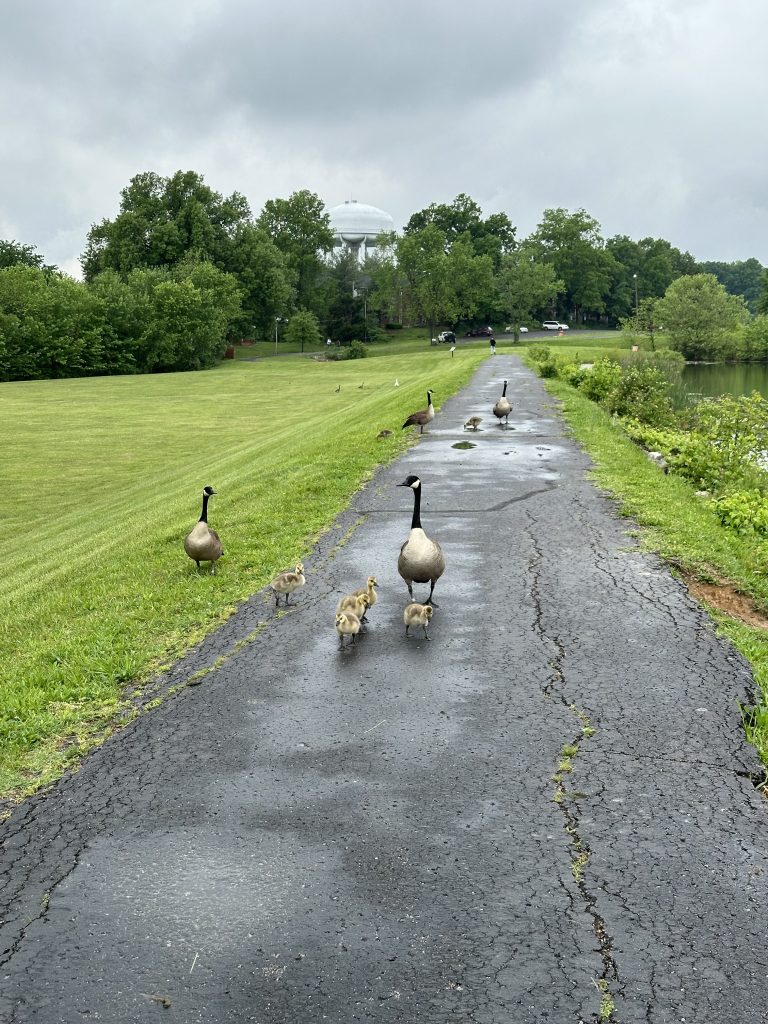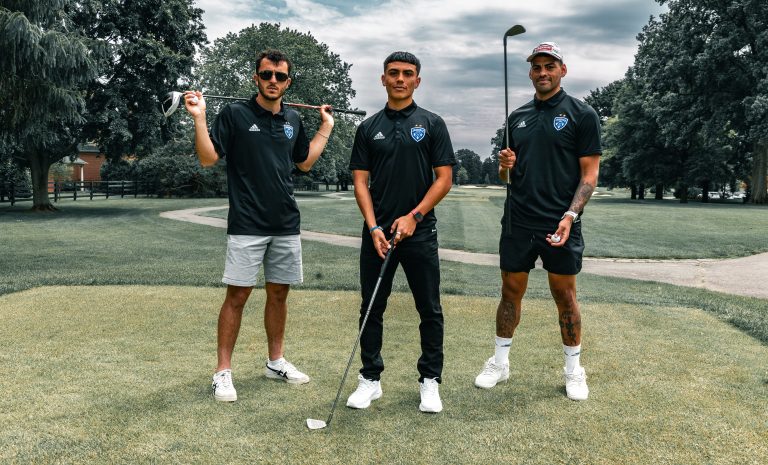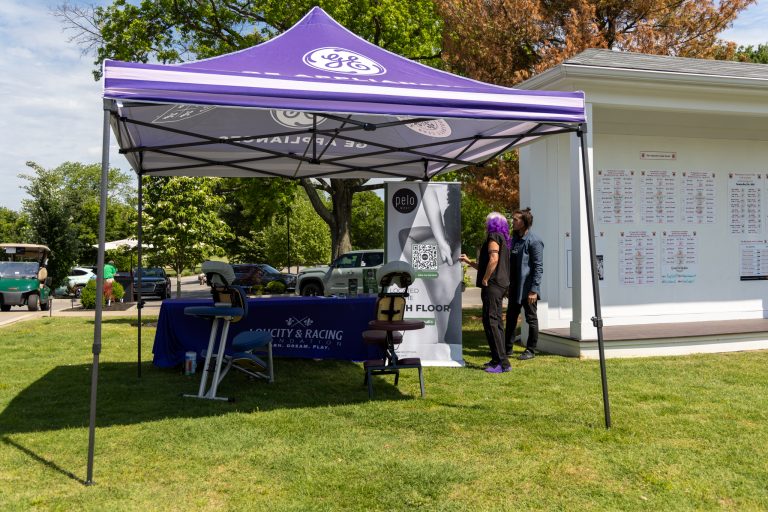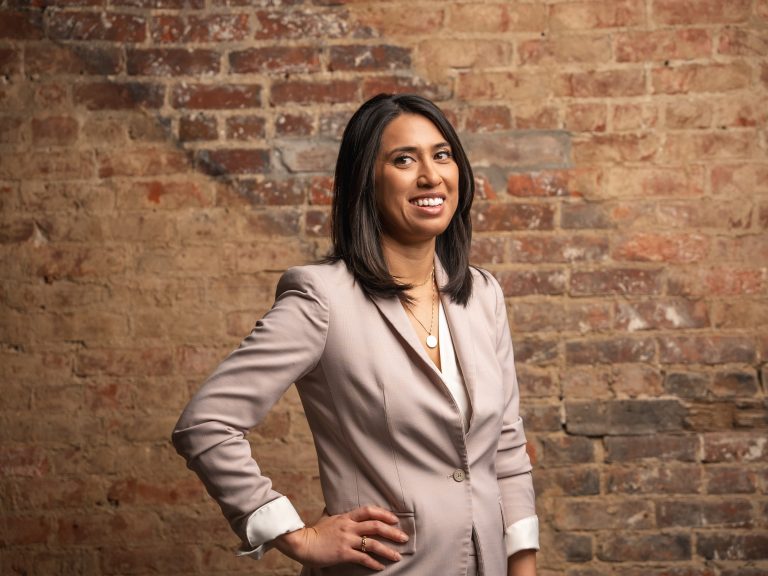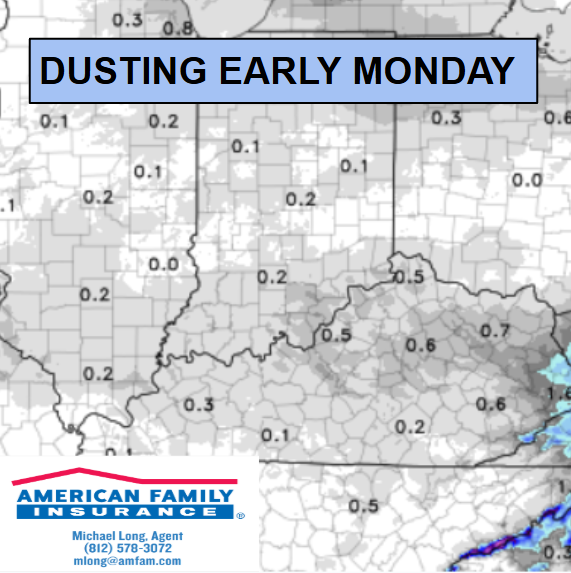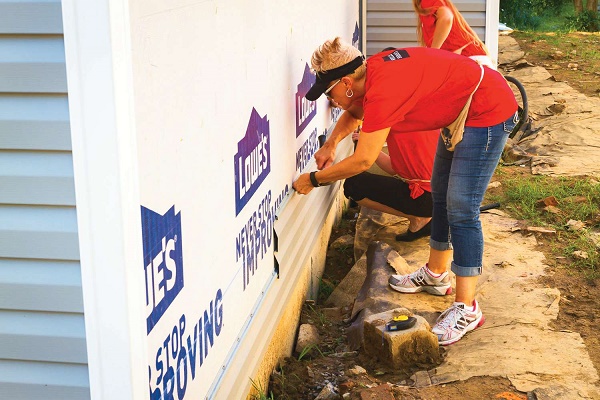
HABITAT FOR HUMANITY DOESN’T “GIVE” PEOPLE HOMES. BUT IT DOES GIVE THEM STABILITY, SECURITY AND DIGNITY.
By Steve Kaufman | Photos By Tim Girton
HABITAT FOR HUMANITY has built its reputation on televised glimpses of President Jimmy Carter and a bevy of happy, smiling young people up on ladders, putting down roof beams, hammering nails, providing another free house for another deserving family.
The suggestion is that there’s an endless supply of housing projects, active volunteers and needy people. Sadly, only one of those is true. There are lots of needy people.
The starker truth is that Habitat depends on donations for everything it gets. So a Habitat project isn’t a Habitat project until someone donates a piece of property.
“Habitat doesn’t have an income stream,” says Jerry Leonard, executive director of New Albany/Floyd County Habitat for Humanity. “We’re not funded by the government, we’re totally dependent on private donations.”
Without the support of donations and contributions, none of this work ever gets off the ground.
“Community support is everything for us,” says Leonard. “And that includes all the volunteer workers who give us their time and the building contractors who reduce their charges for us so we can build these homes more affordably for the people who need them.”
Ah, yes, “the people who need them.” The organization, unfortunately, never runs out of those. But as for those “free houses” that Habitat “gives away,” that’s another myth: The homes are not free and not given away. It’s more complicated than that.
NOT A FREE HOUSE

“There was a Habitat house being built in my neighborhood and I heard someone say, ‘Looks like another welfare mom is getting a free house,’ ” says Holly Brooks, a New Albany resident. “That just burned my nerves. I wanted to march across the street and say to him, ‘These are not welfare moms and this is not a free house.’ ”
Brooks knows. She’s a single mother of three boys, and until she moved into her Habitat for Humanity home on Culbertson Avenue in December 2014, she lived in housing projects and apartment developments.
“Habitat requires that we have jobs,” says Brooks, who works for Adaptive Nursing & Healthcare Services in Jeffersonville. “We buy these homes, we pay a mortgage, pay the utilities, pay the homeowners insurance, maintain an escrow account, pay for upkeep on the house.
“This,” she says, defiantly, “is my house.”
IT’S MORE THAN CHARITY
The idea of Habitat for Humanity, right from the beginning, has been to provide more than charity. It provides dignity and responsibility, education and values, creating better citizens, better parents, better neighbors. Without that, says Leonard, you don’t break the cycle of poverty.
“We like to say that we require ‘skin in the game’ from our recipients,” Leonard says. “That way, they take care of their new property and turn it into an asset.”
So Habitat does build the lucky applicant’s new home, but then it mortgages the house to that applicant and makes the applicant toe some very precise marks. It actually goes through the same mortgage process as would occur with a bank. It takes a credit report, asks for a financial statement and bank accounts, evaluates the applicant’s employment situation, measures the applicant’s ability to repay the loan and maintain the property.

“Habitat is under the same Dodd-Frank restrictions as any bank,” says Karen Carmickle, volunteer coordinator and office manager in New Albany.
Habitat also hews to the federal low-income-housing guidelines. In Floyd County, the average median income is $63,000 a year. If you make 80 percent of that or less, you’re considered “low income.”
It is, of course, a less-rigorous process than it would be with a bank. “In fact,” says Leonard, “a traditional bank probably wouldn’t look at most of these people. We try to find a way to make them qualify.”
The New Albany affiliate gets hundreds of inquiries a year, but generally only about 30 end up as applicants, and maybe 21 of those meet the guidelines.
And then only two applicants in most years get the keys to a new home. “We get a lot of single mothers,” says Leonard. “Children can get expensive. It gets hard to decide who we go with, there’s so much need out there.”
Nor are the successful applicants home free (as it were). They still have to “earn” their mortgage. Habitat requires them to begin saving money, because they’ll have to pay their own closing costs. They have to take a financial education class, learning to budget and manage; and they have to learn the basics of living in a home, fixing simple things, maintaining a yard.
While Habitat is a less rigorous mortgagor that most banks, it must have many of the same safeguards as any lender who goes on the limb for a $70,000 loan. “We hold the mortgage, and the resident’s mortgage payment becomes an asset for us,” says Leonard. “Without that flow of funds, we can’t continue to do the work we do.”
EXPANDING TO CLARK COUNTY
The scope of that work is increasing for this Floyd County operation. It has widened its coverage since it first came into the county in 1991, part of the international nonprofit home-building organization founded in Georgia in 1976. (“Not by Jimmy Carter,” says Leonard. “That’s another myth.”)
In 2012, it built 12 homes as part of the Henryville March to Recovery program, following that town’s devastating tornado experience, and it’s now extending its charter into Clark County. By the end of the year, Leonard expects to change its name to Habitat for Humanity for Southern Indiana when all the paperwork is complete.
But two homes a year seems the optimum output for the organization, given its challenges and limitations. Fortunately, it has some generous partners.
“The Horseshoe Foundation just gave us $15,000; Community Foundation of Southern Indiana just gave us $15,000; and Wells Fargo Bank gave us $30,000,” says Leonard. “This year, we raised $170,000 to build two homes.”
The Town of Clarksville paid for the demolition of a house before Habitat acquired it, saving a great deal of money. The New Albany Housing Authority works closely with Habitat, as well.
In August, Habitat is partnering with Southern Indiana Momentum for a fund-raising evening of music and information, plus a silent auction, called “From the Ground Up” at Kyes II in Jeffersonville. Lefty and the Lunatics will provide the entertainment, Orange Clover the food, Sweets by Morgan the desserts and Flat 12 the beer.
Information on the event, including how to buy tickets and/or be a sponsor, is available on the web site newalbanyhfh.org.
An ongoing Habitat fund-raiser is called Women Build, a program for women who want to learn construction skills, build homes and contribute to their communities. Teams of up to 10 participants (at least 50 percent of them must be female) are asked to raise $150 per team member and invited to participate in a local project. Lowe’s is the national sponsor of the event.
Contractors and vendors are often willing to give Habitat discounts on supplies and services. Leonard notes that Classic Truss, the Clarksville-based supplier of building materials, is helping frame Habitat’s current build project, on East Market Street in New Albany, and donating the lumber at cost.
“Construction costs have gone up in our area,” says Leonard, “so building an affordable house is more and more of a challenge.”
And then there are the volunteers, the labor portion of the construction budget. They often turn up from some fairly unexpected places, few more so than a group that participated in June.
SkillsUSA, a national organization that strives for a skilled American workforce, was in Louisville this summer for its annual convention. “We had 40 of those high-schoolers come out to Clarksville for the weekend,” says Leonard. “You just can’t always plan for timing like that.”
 THE FACE OF VOLUNTEERISM
THE FACE OF VOLUNTEERISM
Leonard must have seen something of himself in those bright-eyed faces. A few years ago, he had just parted ways with Aegon after 18 years, where he had worked his way up from a receptionist to vice president of marketing services. He was sitting in church and saw a request for volunteers on the bulletin board. “My excuse in the past had always been that I didn’t have enough time. I looked up to heaven and said, ‘Oh, I see. You’ve taken away my excuse.’ ”
He went to work for Hosparus and then, in October, became New Albany/Floyd County’s first full-time Habitat employee. “With these organizations,
you’re not helping just one person or family, you’re helping a whole community,” he says, “and watching the rewards of that is what motivates me. Seeing the faces light up when we talk about building their homes, I say, ‘I’m good!’ ”
Like when Holly Brooks first found out she’d be having a home built. “I thought, ‘It’s a dream’ – and then I realized, no, it’s not a dream,” she said. “It’s my house. I now know I have somewhere that’s permanent for my children. My 11-year-old, who’s special needs, will always have a place to call his own. They’ll have privacy and security now.”
And like when 16-year-old Hunter Brooks looked at the activity bustling around the building of his new home, turned to his mother and asked, “Are they really doing all this for us?”
HOW YOU CAN HELP
There’s almost no opportunity for help that Habitat for Humanity can’t use, from cash to land to supplies to sweat.
“We accept anybody,” says Jerry Leonard, executive director of the New Albany/Floyd County Habitat for Humanity. ” Your skill-set doesn’t matter, if you’re willing to learn.”
Just contact Habitat’s office. They’ll tell you what they need. The web site is www.newalbanyhfh.org. It provides information on current projects, how to volunteer, upcoming fundraisers, how to donate and how to apply for a home of your own.
The phone number is 812.948.1235
Or pay them a visit at 711 E. 8th St. in New Albany








